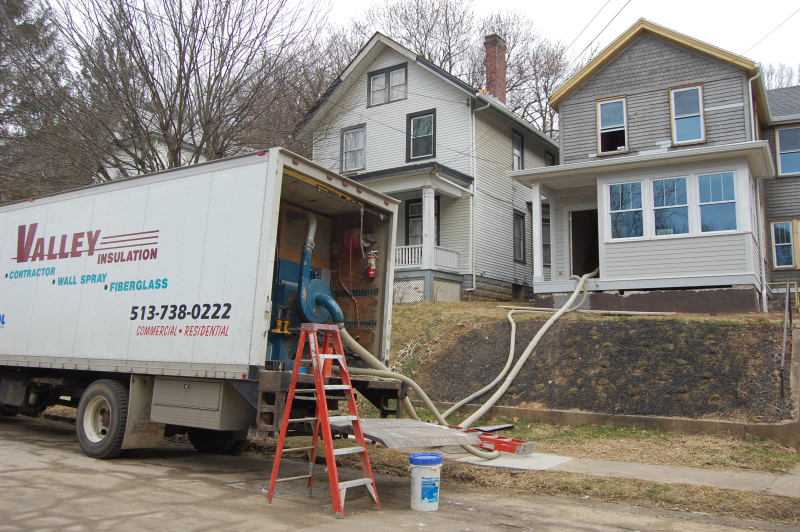
Valley Insulation specializes in high-quality Nu-Wool cellulose insulation. Our blown-in insulation fills your attic to the proper depth, and it completely fills your walls up to 3-½ inches thick. So how do we do it? Valley Insulation describes how our blown-in insulation machine works.
Related Post: Nu-Wool Recycled Insulation Facts and Figures
One Giant Vacuum in Reverse
Our blown-in insulation machine works a lot like a giant vacuum in reverse. Instead of sucking in air, it blows air out using a powerful motor. Like a vacuum, our machine uses hoses to deliver the material.
It’s Loud
A blown-in insulation machine gets loud once it’s turned on. Luckily, we keep our machine in the back of one of our heavy-duty trucks. The machine never enters your building. All we do is bring long hoses that run from the truck to any room in your building. This method saves us time so we can get the job done faster. Don’t worry, our lengths of hose are very secure and attached firmly to the machine. They’re also heavy-duty, so they don’t get holes or tears.
Blocks of Material
Nu-Wool premium cellulose insulation comes in rectangular blocks of 25 pounds, each wrapped in plastic. Our insulation experts unwrap each block and place them into a large open bin above the blower, referred to as the hopper. Churning rods in the hopper break up the cellulose insulation into small pieces that quickly move through the hose to the delivery point.
Blowing the Cellulose Insulation
In an attic, our team sweeps the hose back and forth as if we’re watering your lawn. The blown-in insulation piles up in even layers. We apply insulation that’s anywhere from 13 to 20 inches thick, which is more than enough to cover the rafters of your attic. Nu-Wool premium cellulose insulation has an R-value of 3.8 per inch, and the minimum R-value for your attic should be 49.
For walls, we handle blown-in insulation a bit differently. Existing buildings need carefully drilled holes towards the top of each wall cavity in between the wall studs. These holes give us a way to blow insulation into the wall. New construction allows us to blow insulation much faster, from bottom to top, and then we trim back any excess material to re-use for later. Every bit of every wall receives up to 3-½ inches of insulation that fills around pipes, electrical conduits, switches, and outlets before the drywall goes on.
Related Post: Why Cellulose Insulation Is Environmentally Friendly
Blown-In Insulation From Valley Insulation
Valley Insulation is a leading expert on blown-in insulation in and around Cincinnati, Ohio. We’ve been insulating the Ohio River Valley since 1977, nearly 40 years, and we’re proud to serve you in any way possible. Contact Valley Insulation or call (513) 353-4100 for more information.

